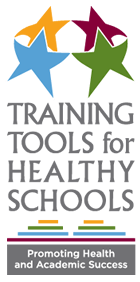Questions
How is physical education defined, and why is it the foundation of CSPAP?
What is the difference between a waiver, exemption, and substitution?
What should grade-level outcomes be by the end of Grade 5? By the end of high school?
What is meant by differentiated instruction and deliberate instructional practice?
What does a well-designed PE program do, and what is the purpose of a PE curriculum?
What are the National Standards for K-12 Physical Education, and is there a national program to help increase student fitness?
What three domains of learning are addressed by physical education?
How can inclusion of students with special needs or disabilities be ensured?
What physical education policies should be included in a local school wellness policy?
Why is student assessment in physical education important, and what does it include?
A: Physical education is an academic subject that demands the same rigor as other core subjects and provides a planned, sequential, K-12 standards-based program of curricula and instruction designed to develop motor skills, knowledge and behaviors for healthy, active living, physical fitness, sportsmanship, self-efficacy and emotional intelligence. It provides youth with the fundamental education and skills needed to make decisions regarding physical activity.
Daily physical education in school equips adolescents with the appropriate knowledge, skills, and confidence to be physically active for a lifetime and helps them meet the nationally recommended 60 minutes of daily physical activity.
A: A waiver means that a school district or school is not required to provide students with state-mandated physical education.
An exemption means that students do not need to fulfill a physical education requirement for certain reasons.
A substitution means that students can participate in other activities in place of physical education. School districts and schools should prohibit students from substituting other activities such as interscholastic sports, ROTC, or marching band for physical education class time or credit requirements.
A: By the end of Grade 5, students should be able to demonstrate competence in fundamental motor skills; use basic movement concepts in dance, gymnastics and small-sided practice tasks; identify basic health-related fitness concepts; exhibit acceptance of self and others in physical activities; and identify the benefits of a physically active lifestyle.
By the end of high school, students should be able to demonstrate the ability to plan and implement different types of personal fitness programs; demonstrate competency in two or more lifetime activities; describe key concepts associated with successful participation in physical activity; model responsible behavior while engaged in physical activity; and engage in physical activities that meet the need for self-expression, challenge, social interaction, and enjoyment.
See the "Grade Level Outcomes for K-12 Physical Education" document located in the Links section.
A: Differentiated instructional practices are specific teaching methods such as modified activities, active engagement, self-assessment, and self-monitoring. Examples include differentiated instruction, active engagement, and modified activities.
Deliberate instructional practice involves activities that are designed to lead to knowledge acquisition and improved performance. Examples include self-assessment and self-monitoring.
A: A well-designed program:
- Meets the needs of all students
- Keeps students active for most of physical education class time
- Teaches self-management
- Emphasizes knowledge and skills for a lifetime of physical activity
- Is an enjoyable experience for all students
A physical education curriculum standardizes the curriculum in a school district across schools and ensures equitable education for all students. It also results in improved teacher quality and increased consistency in instruction. The curriculum should identify the content to be taught at all grade levels and includes learning objectives for students to meet and units and lessons for teachers to implement.
A: The standards are:
- Standard 1 - The physically literate individual demonstrates competency in a variety of motor skills and movement patterns.
- Standard 2 - The physically literate individual applies knowledge of concepts, principles, strategies and tactics related to movement and performance.
- Standard 3 - The physically literate individual demonstrates the knowledge and skills to achieve and maintain a health-enhancing level of physical activity and fitness.
- Standard 4 - The physically literate individual exhibits responsible personal and social behavior that respects self and others.
- Standard 5 - The physically literate individual recognizes the value of physical activity for health, enjoyment, challenge, self-expression and/or social interaction.
The national program to help with increasing student fitness is the Presidential Youth Fitness Program. This program helps students achieve Standard 3.
A: The three domains of learning addressed are:
- Cognitive or mental skills related to the knowledge of movement
- Affective, which addresses growth in feelings or attitudes
- Psychomotor, which relates to the physical or manual skills related to physical literacy
A: The physical education teacher should include strategies for differentiation and modification of lessons for students with an individualized education program (IEP) to participate in physical education.
A: Physical education policies that should be included are:
- Every student is required to take daily physical education in grades K-12, with instruction periods totaling 150 minutes/week in elementary and 225 minutes/week in middle and high school.
- School districts and schools require full inclusion of all students in physical education.
- School districts and schools do not allow waivers from physical education class time or credit requirements.
- School districts and schools do not allow student exemptions from physical education class time or credit requirements.
- School districts and schools prohibit students from substituting other activities (e.g., JROTC, interscholastic sports) for physical education class time or credit requirements.
- Physical education class size is consistent with that of other subject areas and aligns with school district and school teacher/student ratio policy.
- Physical activity is not assigned or withheld as punishment.
- Physical education is taught by a state licensed or state-certified teacher who is endorsed to teach physical education.
- Physical education teachers engage students in moderate to vigorous physical activity for 50% of class time.
A: Assessments provide concrete evidence of whether students have achieved grade-level outcomes, allow teachers to reflect on effectiveness of instruction, and provide evidence of program success. Student assessment includes:
- Conducting pre-assessments to learn where students are in the beginning of a learning sequence
- Formative assessments that are ongoing during instruction to check for understanding
- Summative assessments at the close of a unit or instructional sequence to provide a comprehensive summary of each student's progress
Links
Educating the Student Body
Grade Level Outcomes for K-12 Physical Education
[PDF - 1MB]
Guidelines for Elementary, Middle & High School PE
Instructional Framework for Fitness Education in Physical Education
[PDF - 455KB]
National PE Standards
PE Program Checklist
[PDF - 285KB]
State PE Standards Database
The Essential Components of PE
[PDF - 391KB]



